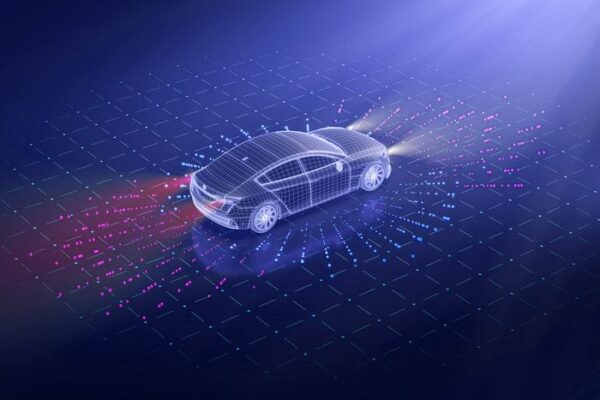The Future Unfolds: The Evolution of Self Driving Cars
Understanding Self Driving Cars:
Self driving cars, or autonomous vehicles (AVs), are equipped with advanced technologies that allow them to operate independently of human drivers. These vehicles utilize a blend of sensors, cameras, radar, and sophisticated algorithms to understand their surroundings, make real-time decisions, and drive safely. The level of automation varies, ranging from partial assistance to complete autonomy.
The Journey to Autonomous Vehicles:
The quest for self-driving cars has been a long and evolving journey:
- Early Concepts: The idea of autonomous vehicles has existed since the 1920s, but serious research began in the 1980s and 1990s, with projects like Carnegie Mellon’s Navlab and the DARPA Grand Challenges setting the stage.
- Technological Milestones: The early 2000s brought significant advancements, including improved sensors, machine learning techniques, and detailed mapping. Companies such as Google and Tesla have heavily invested in developing and refining these technologies.
- Current Landscape: Today, semi-autonomous features like adaptive cruise control and lane-keeping assistance are common in consumer vehicles. Meanwhile, fully autonomous vehicles are being tested in real-world conditions and slowly becoming a part of our transportation ecosystem.
How Autonomous Vehicles Operate:
Self-driving cars integrate a variety of technologies to ensure safe and efficient operation:
- Sensors and Cameras: These devices capture detailed data about the vehicle’s environment, including obstacles, road conditions, and traffic signals.
- Lidar and Radar: Lidar (Light Detection and Ranging) and radar (Radio Detection and Ranging) provide crucial information on distances and object detection, enhancing the vehicle’s awareness.
- Artificial Intelligence (AI): AI algorithms process the data collected to make informed decisions, recognize patterns, and anticipate the actions of other road users.
- Connectivity: Autonomous vehicles use Vehicle-to-Everything (V2X) communication to interact with other vehicles, infrastructure, and pedestrians, improving coordination and safety.

The Advantages of Self Driving Cars:
The benefits of self-driving cars extend far beyond mere convenience:
- Improved Safety: Autonomous vehicles have the potential to drastically reduce accidents caused by human errors, such as distraction or impaired driving.
- Enhanced Efficiency: These vehicles can optimize driving patterns to minimize traffic congestion and improve fuel efficiency through precise control.
- Increased Accessibility: Self-driving cars offer mobility solutions for those unable to drive, such as the elderly and people with disabilities.
- Environmental Benefits: When combined with electric vehicle technology, self-driving cars can contribute to lower emissions and a more sustainable transportation system.
Challenges Ahead:
Despite their promise, self-driving cars face several challenges:
- Regulatory Issues: Establishing comprehensive regulations and safety standards is crucial for the broader adoption of autonomous vehicles.
- Ethical Questions: Autonomous vehicles must address complex ethical decisions, such as how to handle unavoidable accident scenarios.
- Technological Hurdles: Ensuring that autonomous systems are reliable in diverse and unpredictable environments remains a significant challenge.
- Public Trust: Building public confidence in self-driving technology is essential for its successful integration into everyday life.
Looking to the Future:
The future of self-driving cars is brimming with potential and innovation. As technology advances, we can expect:
- Widespread Adoption: Autonomous vehicles will become more common, with greater availability in both urban and suburban areas.
- Smart City Integration: Self-driving cars will play a key role in smart city infrastructure, enhancing transportation systems and urban planning.
- Innovative Uses: New applications of autonomous technology, such as delivery services and ride-sharing, will emerge, expanding the possibilities of mobility.
- Ongoing Innovation: Continued progress in AI, sensors, and connectivity will drive further advancements, overcoming current limitations and enhancing vehicle capabilities.
Conclusion:
Self-driving cars are set to revolutionize the way we travel, offering enhanced safety, efficiency, and accessibility while contributing to environmental sustainability. As we navigate this exciting frontier, the development of autonomous vehicles will bring new opportunities and challenges. Embracing this transformative technology will shape the future of transportation and redefine our experiences on the road.
FAQs:
1. What are self-driving cars?
Self-driving cars, also known as autonomous vehicles (AVs), are vehicles equipped with technology that allows them to operate without human intervention. They use a combination of sensors, cameras, radar, and advanced algorithms to navigate and make driving decisions independently.
2. How do self-driving cars work?
Self-driving cars rely on several key technologies:
- Sensors and Cameras: Capture real-time data about the vehicle’s environment, including obstacles, road signs, and traffic signals.
- Lidar and Radar: Provide detailed distance measurements and object detection.
- Artificial Intelligence (AI): Processes data from sensors to make decisions, recognize patterns, and anticipate the actions of other road users.
- Connectivity: Enables communication with other vehicles and infrastructure to enhance safety and coordination.
3. What levels of automation do self-driving cars have?
Self-driving cars are classified into various levels of automation:
- Level 0: No automation.
- Level 1: Driver assistance, such as adaptive cruise control.
- Level 2: Partial automation, where the car can control both steering and acceleration but requires driver supervision.
- Level 3: Conditional automation, allowing the vehicle to handle all driving tasks in certain conditions but requiring driver readiness to take over.
- Level 4: High automation, where the car can drive itself in most environments without human intervention.
- Level 5: Full automation, with no need for human intervention or controls.
4. What are the benefits of self-driving cars?
Self-driving cars offer numerous advantages:
- Increased Safety: They can significantly reduce accidents caused by human error, such as distracted or impaired driving.
- Improved Efficiency: They optimize driving patterns, reduce traffic congestion, and enhance fuel efficiency.
- Greater Accessibility: Provide mobility for individuals who cannot drive, such as the elderly or disabled.
- Environmental Benefits: Potentially lower emissions when integrated with electric vehicle technology.
5. What challenges do self-driving cars face?
Self-driving cars face several hurdles:
- Regulatory Issues: Developing and implementing comprehensive safety standards and regulations is essential.
- Ethical Dilemmas: Autonomous vehicles must navigate complex ethical decisions, such as handling unavoidable accident scenarios.
- Technological Constraints: Ensuring reliability in diverse and unpredictable driving conditions is a significant challenge.
- Public Acceptance: Building trust and gaining public confidence in self-driving technology is crucial for widespread adoption.
6. How do self-driving cars interact with other vehicles and infrastructure?
Self-driving cars use Vehicle-to-Everything (V2X) communication to interact with other vehicles, road infrastructure, and pedestrians. This connectivity helps improve coordination, enhance safety, and optimize traffic flow.
7. What is the current state of self-driving car technology?
While significant progress has been made, most self-driving cars are still in the testing phase or offer partial automation features. Fully autonomous vehicles are being gradually introduced in controlled environments, with ongoing research and development to address remaining challenges.
8. How can self-driving cars impact urban planning?
Self-driving cars have the potential to transform urban planning by reducing the need for parking spaces, improving traffic management, and enabling new forms of mobility services. They can contribute to the development of smart cities with more efficient transportation systems.
9. Will self-driving cars replace traditional vehicles?
Self-driving cars are expected to complement traditional vehicles rather than completely replace them in the near future. As technology advances and becomes more widespread, the proportion of autonomous vehicles on the road will increase, potentially leading to a shift in how we use and think about transportation.
10. How can I stay informed about advancements in self-driving car technology?
To stay updated on self-driving car technology:
- Follow Industry News: Keep an eye on news from automotive and technology companies.
- Read Research Papers: Explore academic publications and industry reports on autonomous vehicles.
- Join Online Communities: Participate in forums and groups focused on autonomous driving and transportation innovation.
- Attend Conferences: Look for events and conferences dedicated to autonomous vehicle technology and smart mobility.
11. When can we expect self-driving cars to become mainstream?
The timeline for widespread adoption of self-driving cars is uncertain and depends on factors such as technological advancements, regulatory developments, and public acceptance. While progress is being made, it may take several years before fully autonomous vehicles become a common sight on roads.
12. How do self-driving cars handle adverse weather conditions?
Self-driving cars are designed to operate in various weather conditions, but challenges remain. Advanced sensors and algorithms help them detect and respond to weather-related issues, such as rain, fog, or snow. However, ensuring reliable performance in all weather scenarios is an ongoing area of development.




